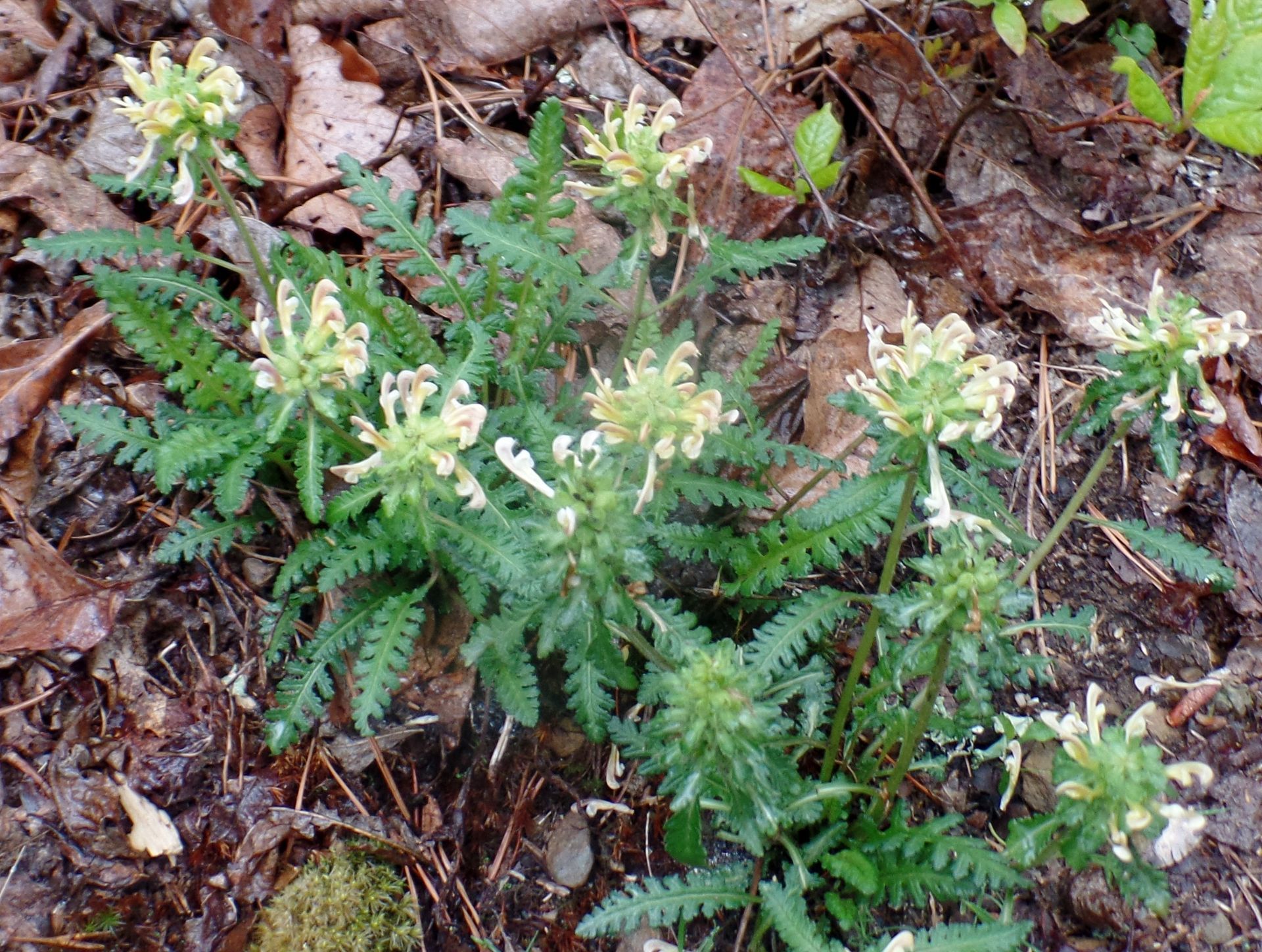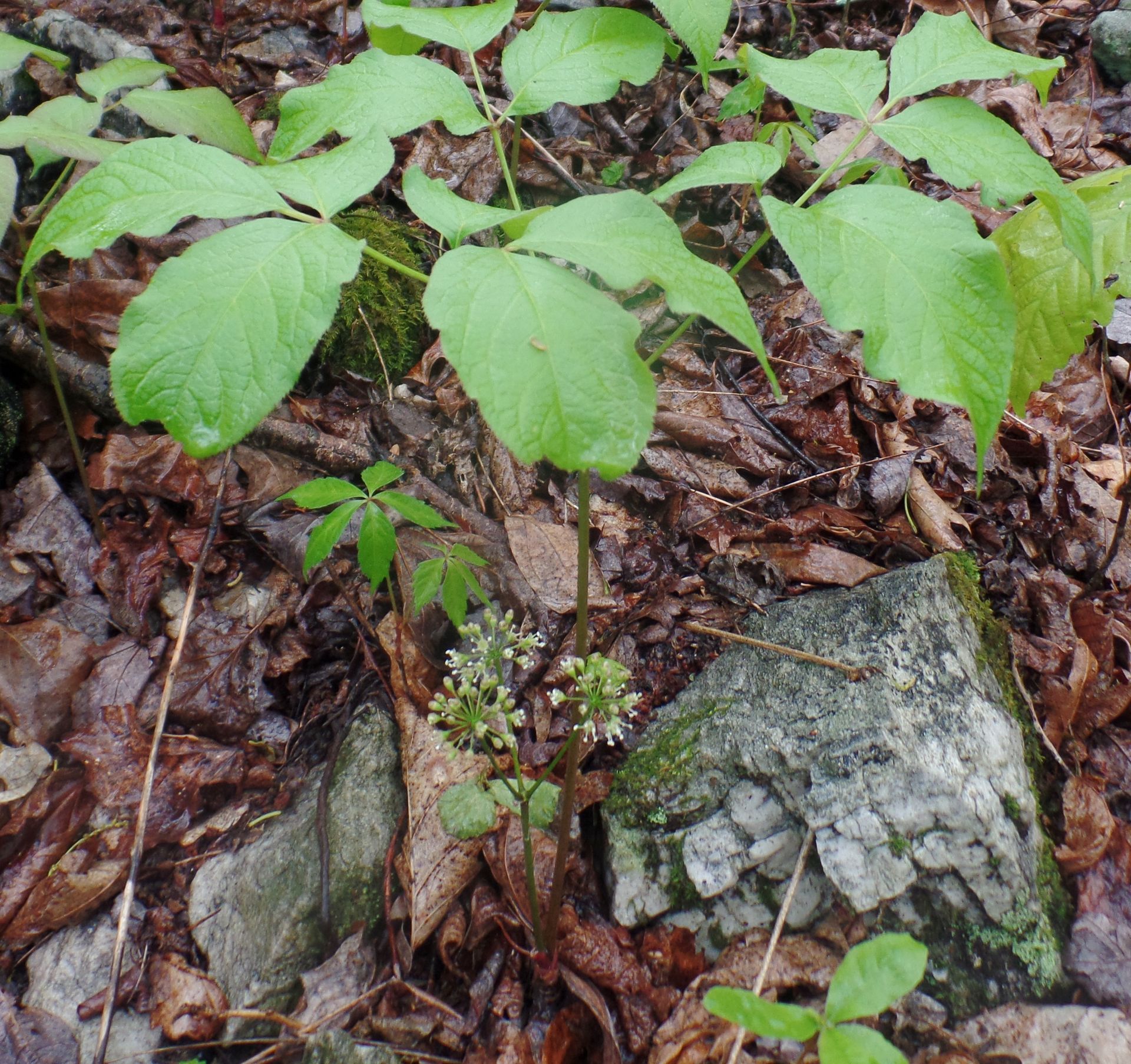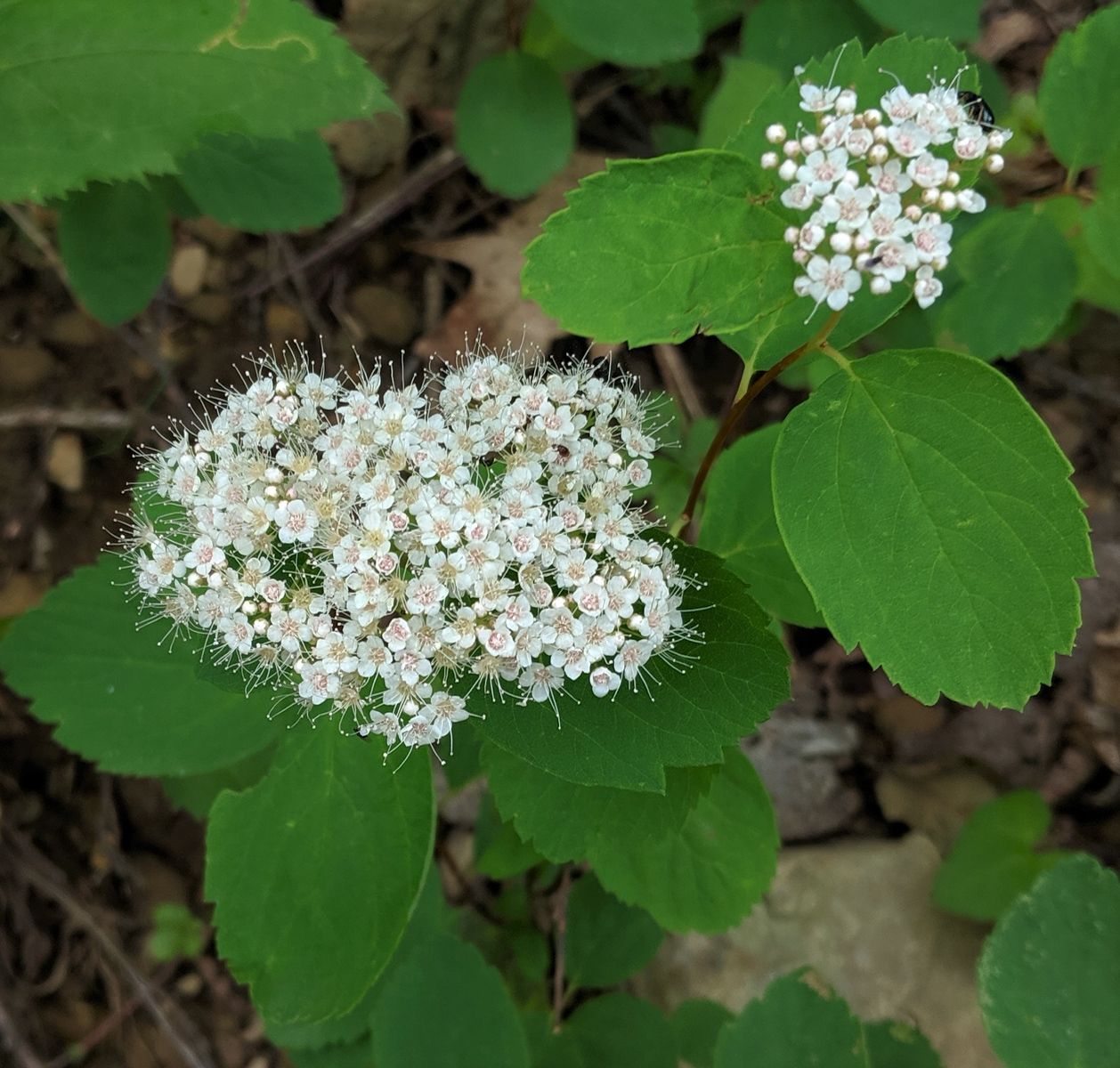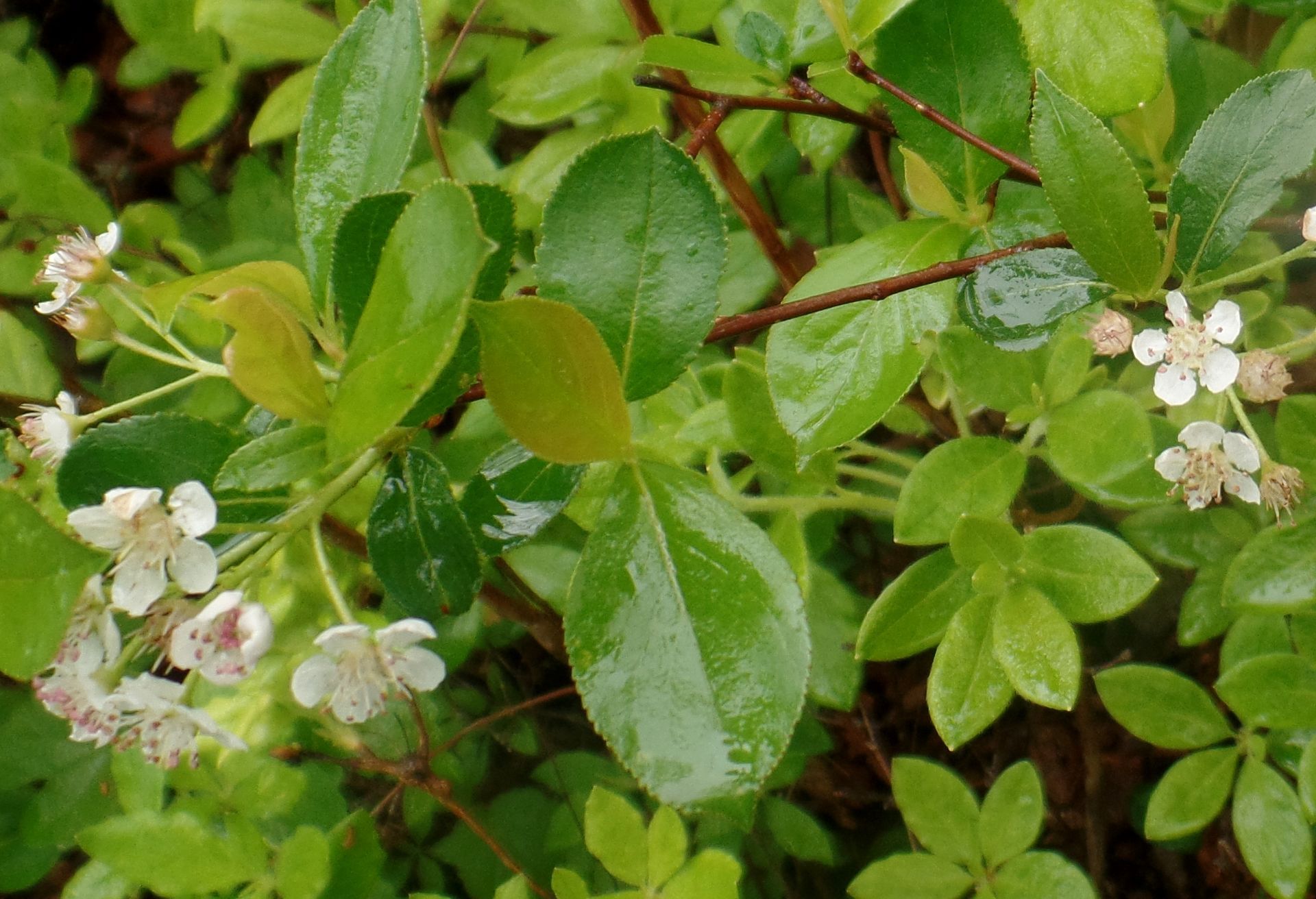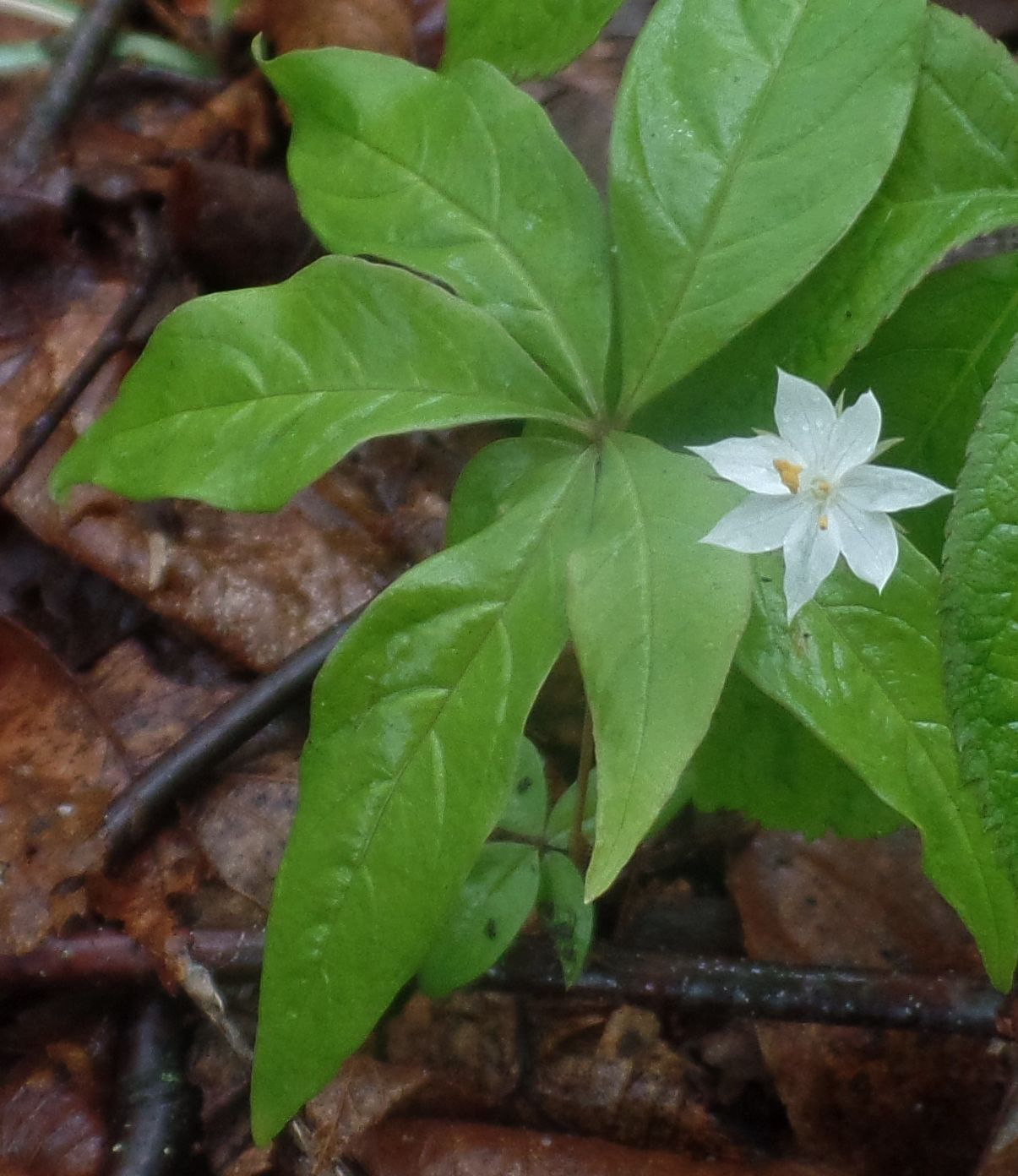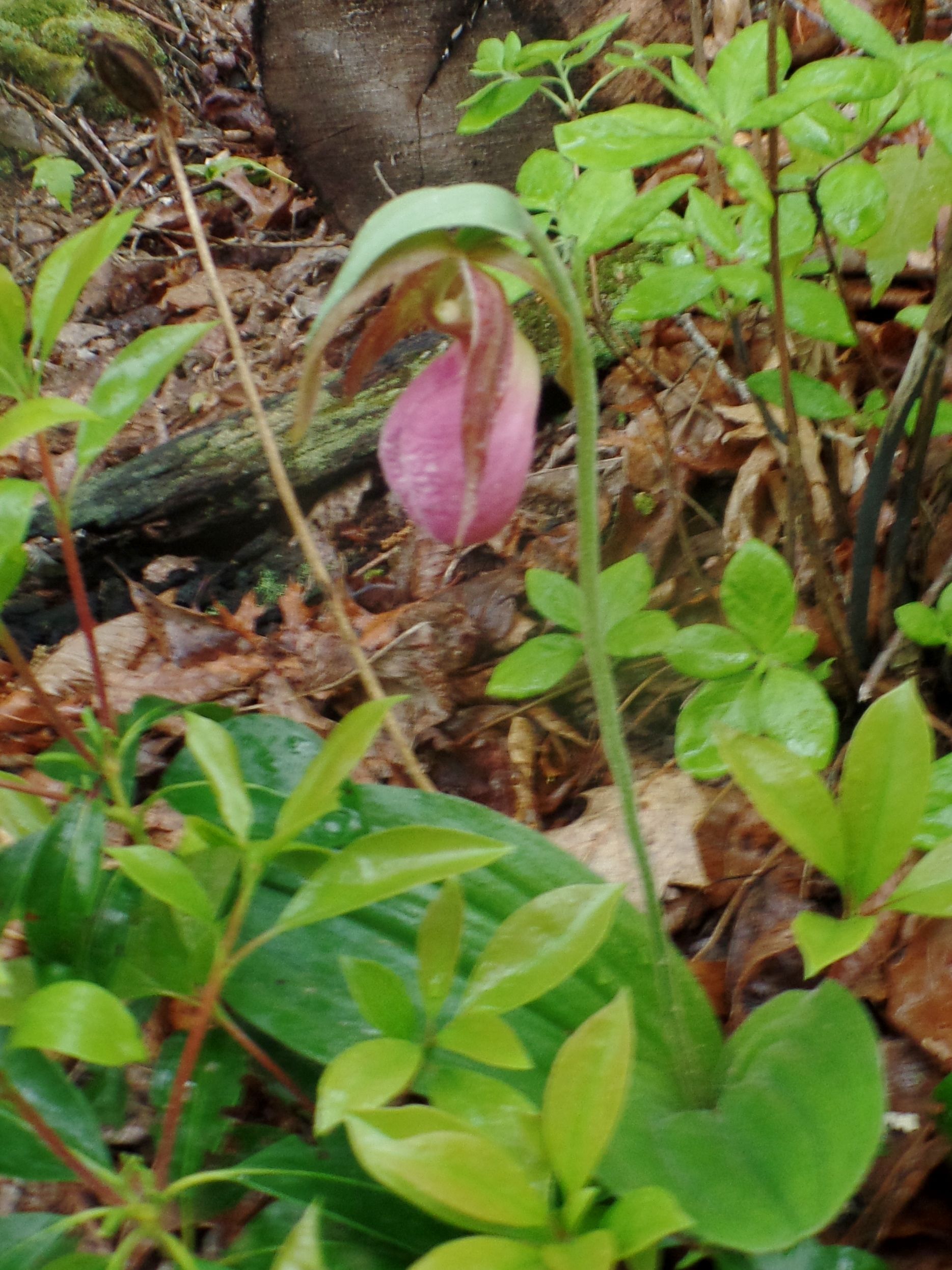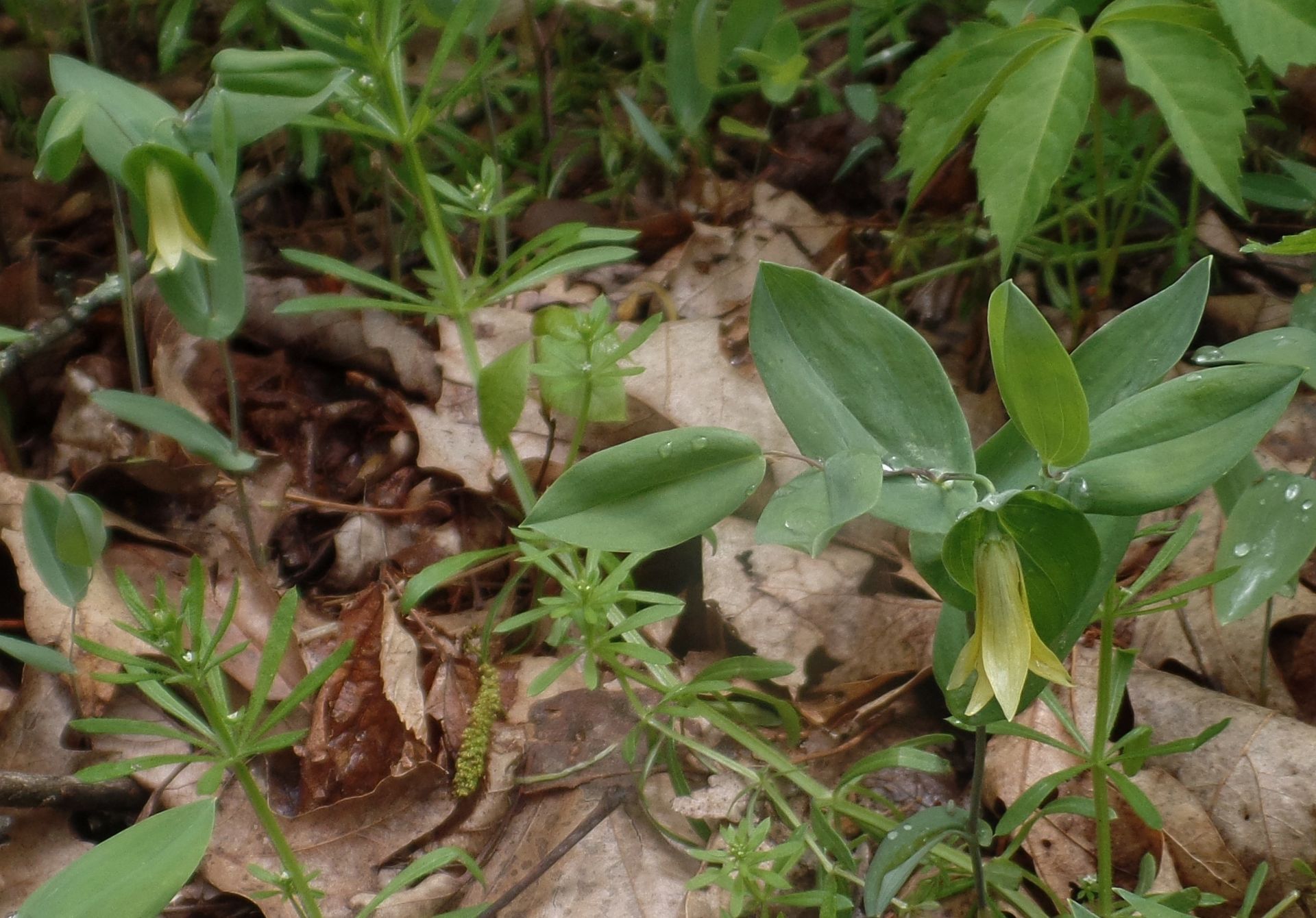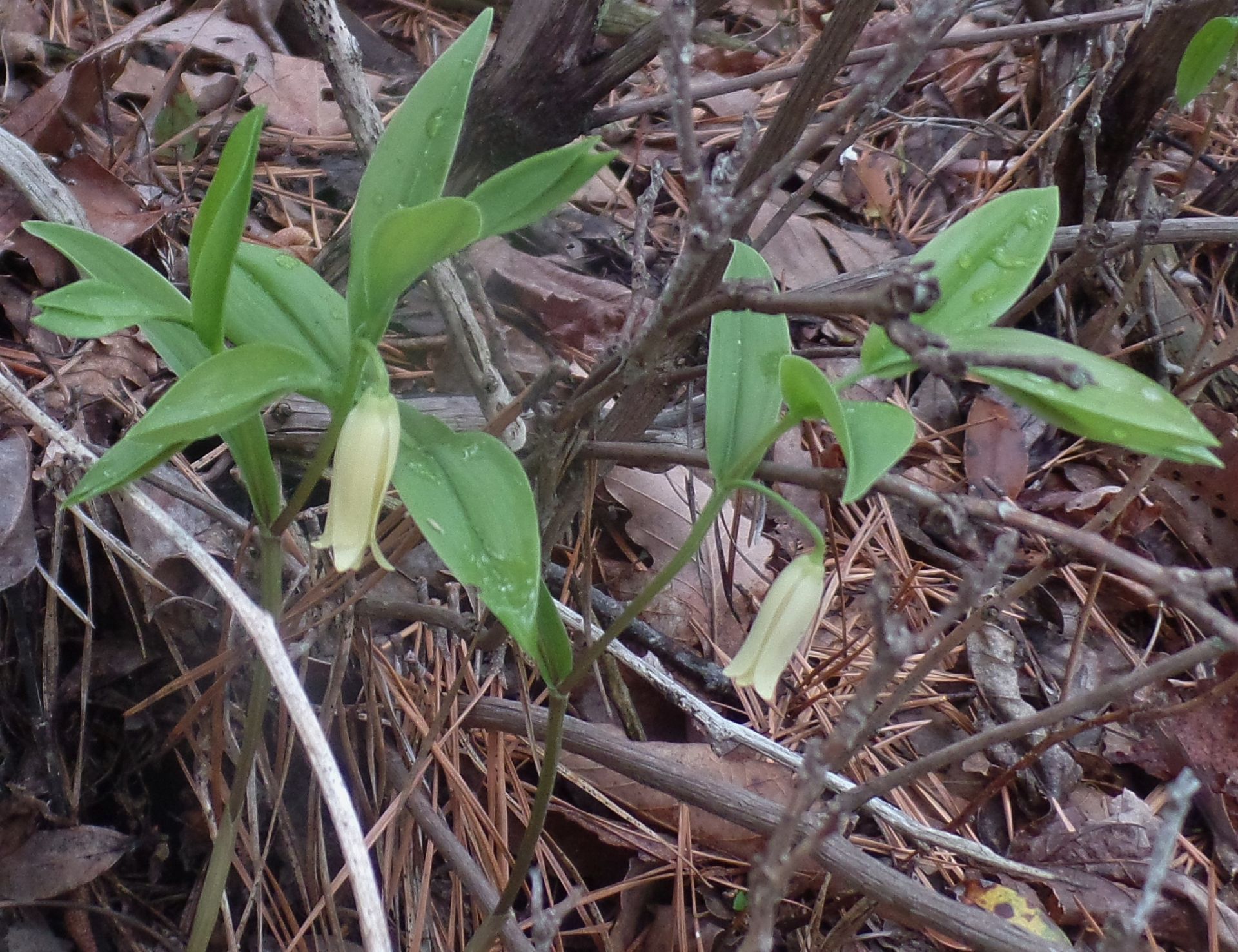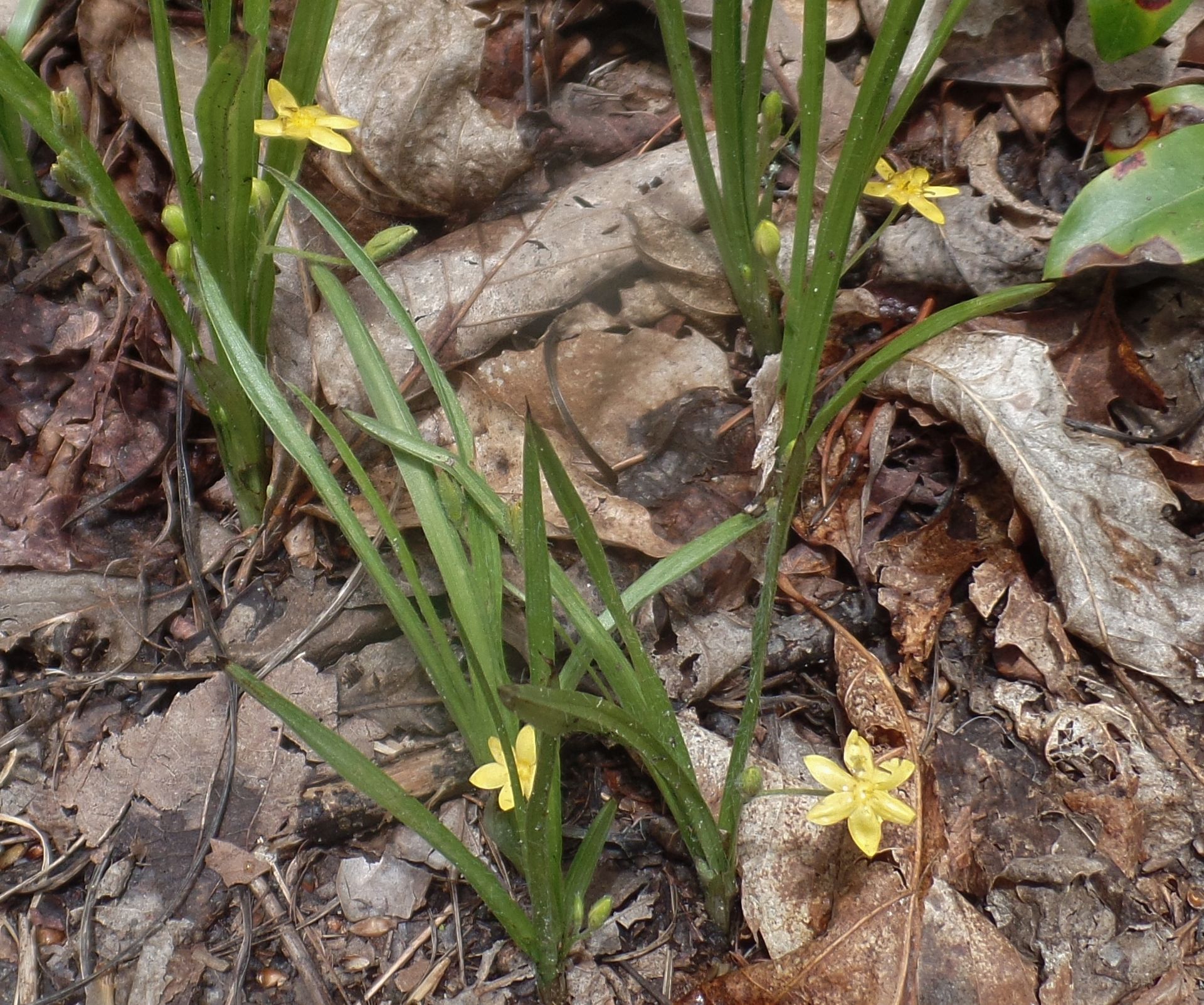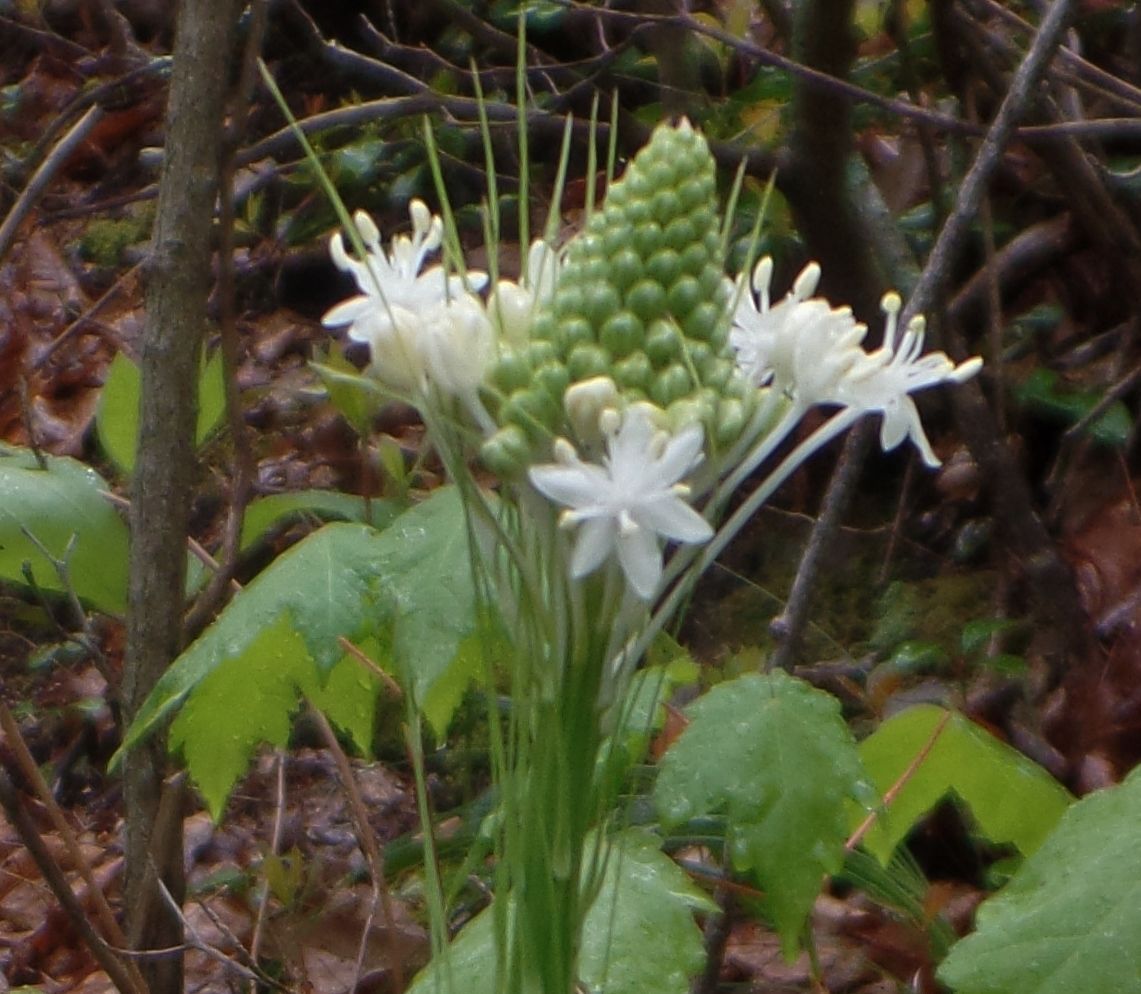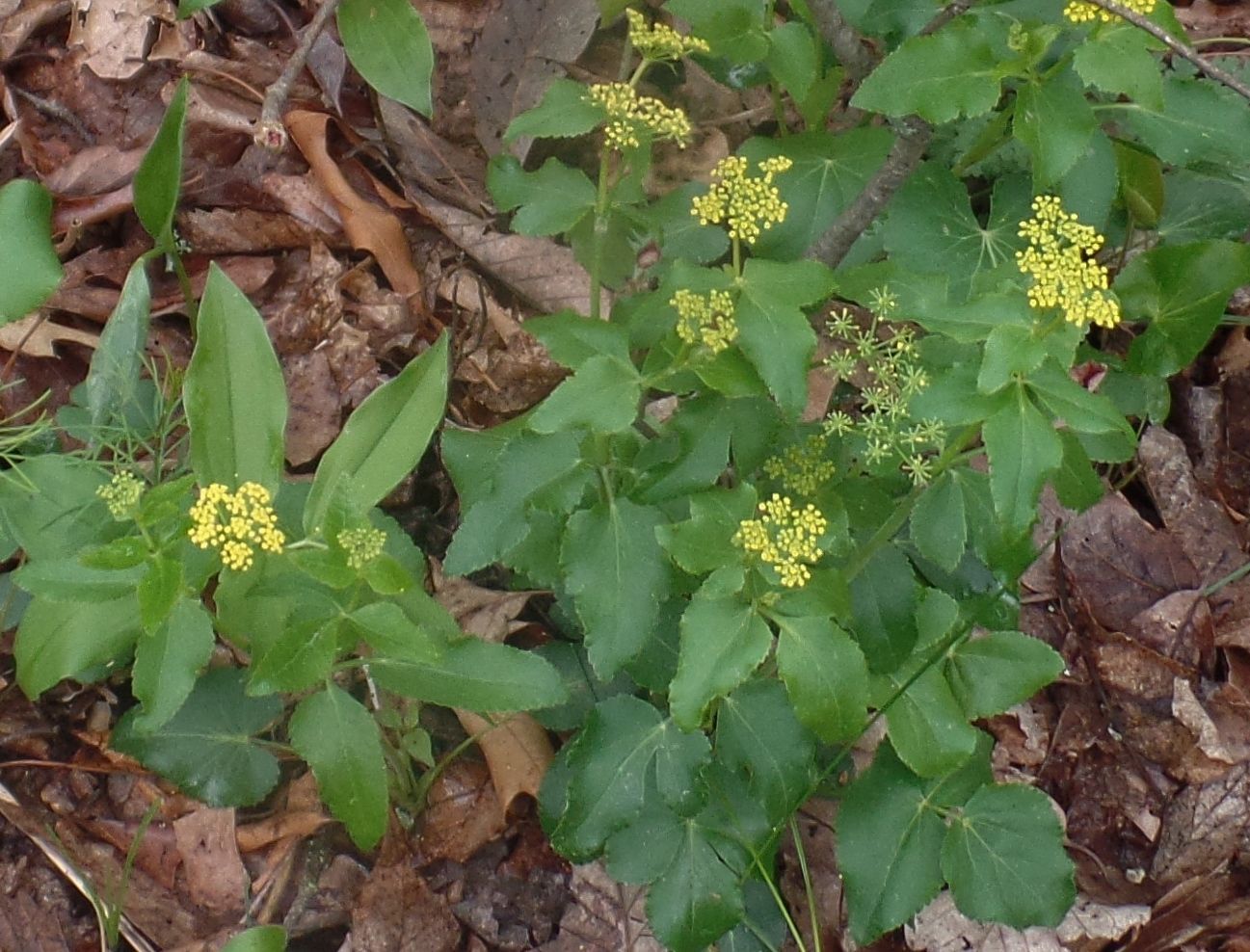"What's that Flower?"
By Richard Stromberg
The Riprap Hollow hike is described on pages 108-111 of PATC’s “Circuit Hikes in Shenandoah National Park.” The hike starts at mile marker 90 of Skyline Drive. The circuit uses Riprap Hollow, Wildcat Ridge, and the AT. The circuit puts on a fantastic floral show in late spring.
This month shows notable plants to look for on the way down Riprap Hollow Trail.
Wood Betony/Lousewort (Pedicularis canadensis). The leaves look like ferns. It has a short, dense spike of yellow or dark reddish flowers growing in a ring. The upper lip of each flower arches over the 3-lobed lower lip. They bloom in late spring.
Wild Sarsaparilla (Aralia nudicaulus) leaves are divided into three parts and each part has three or five, oval leaflets with toothed edges. Under the leaves, a ball of flowers arises from the ground with no leaves on the flower stem. They bloom in late spring.
Several species of Serviceberry (Amalanchier) trees bloom early in spring with many stamens in the middle and five petals. The petals are white and longer and narrower than other spring flowering Rose family fruit trees, and are often irregularly arranged. Serviceberry fruits ripen in June. They range from red to dark purple when ripe. They are about the size of blueberries.
Dwarf Spiraea (Spiraea corymbosa) is a shrub up to one meter tall. Leaves are ovate with toothed edges. The white or pinkish, tightly-packed, quarter-inch flowers grow in a flat or slightly rounded form called a corymb. They bloom in summer.
Dwarf Iris (Iris verna) is less than six inches tall with three blue-violet, erect petals above three spreading sepals of the same color with a yellow band at the base. They bloom in early spring. The sword-like leaves persist long after the flower has disappeared.
Black Chokeberry (Aronia melanocarpa) grows around the rocks of Calvary and Chimney Rocks. It is a small shrub, rarely over six feet, with flat or convex clusters of half-inch, white flowers with five petals. They bloom in late spring. Black fruits ripen in fall.
Starflower (Trientalis borealis--northern) also grows around the Calvary Rocks. One or more flowers grow on one-to-two-inch stems above a whorl of five-to-ten leaves. The one-inch flowers are white and star-shaped with five to nine (usually seven) petals. They bloom in late spring.
Two orchids show up beyond the Rocks. The Pink Lady’s Slipper (Cypripedium acaule) flower is dominated by its pink pouch. The two sides of the pouch fold into each other. The side petals/sepals droop around the pouch. They bloom in late spring. It has only basal leaves. They are wide and shiny green. Downy Rattlesnake Plantain (Goodyera pubescens) is most noticeable for its evergreen, dark green leaves with a network of white veins. They bloom in July and August. The raceme is about a foot tall. The flowers look like little (¼”), white balls, densely packed on the stalk and never open very much. Last year’s stalk and seed pods may remain for many months.
Two Bellworts species bloom in late spring. One-inch flowers dangle individually from the stem like a bell. Each flower has six yellow petals. The 3-inch leaves alternate up the stem. Perfoliate Bellwort (Uvularia perfoliata) leaves are perfoliate, which means the leaf margins surround the stem so the stem appears to pass through the leaf. Mountain Bellwort (Uvularia puberula) leaves have no stalk, attaching directly to the plant stem.
Yellow Stargrass (Hypoxis hirsuta) has bright yellow flowers with six tepals in late spring. The flowers may be almost an inch across and are in clusters of one to nine atop a thin, leafless stem close to the ground, never more than a foot tall. The plant’s narrow leaves are taller than the flower stem and come from the ground.
The Turkeybeard (Xerophyllum asphodeloides) flower raceme at the top of the plant has many, white flowers with six tepals. The flowers open from the bottom to the top. It can grow five feet tall. It has many thin leaves at the base of the plant and narrow leaves on the flower stem. Without flowers, the plant looks like a clump of grass.
Heartleaf Golden-alexanders (Zizia aptera) have a flat-topped inflorescence with the flower stems arising from a common point like the struts of an umbrella. The tiny flowers are yellow and open in late spring. The leaves at the base of the plant are not divided and are heart-shaped. Stem leaves have three or five leaflets. Upper stem leaves are sessile, i.e., attached directly to the main plant stem with no stalk. The leaves/leaflets have fine teeth.

